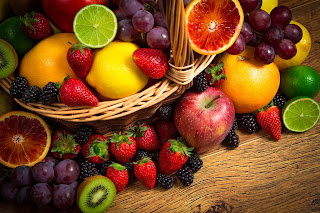If you have diverticulitis, you could benefit from certain
diets. Diets particularly high in fiber and fluids can help improve symptoms of
diverticulitis. However, this is only true for people with
mild or uncomplicated diverticulitis.
Symptoms of diverticulitis occur as a result of inflammation in
the part of the colon that has diverticula. Diverticula are tiny pockets that
occur due to weakening in the colon wall. There is an increased risk for
developing diverticula in people who are older than 40. Those who have
diverticula may not necessarily have any symptoms. It is only when they become
infected that diverticulitis occurs. This happens when fecal matter and
bacteria enter the diverticula.
Symptoms of
diverticulitis may include:
●
Intense pain, mostly on the lower left part of the
abdomen
●
Cramps
●
Nausea
●
Vomiting
●
Bloating
Treatment
Treatment of
diverticulitis depends on the severity of the disease. In uncomplicated cases,
antibiotics and a diverticulitis diet are recommended. With time, low-fiber
foods are replaced with high-fiber foods. This is due to the fact that cramping can occur if you start directly
with high-fiber foods. The aim of a diverticulitis diet is to help the
digestive tract rest and heal, thus preventing further complications.
Taking a lot of fluids
will prevent constipation, since fiber absorbs water to make stools softer.
Drinking up to 2 liters of water per day is encouraged to prevent constipation.
Fluids may also include broths, tea and ice popsicles.
Foods high in fiber such as potatoes, barley, brown rice and
cereals. Potatoes should be skinned and well cooked.
Fruits and vegetables.These are also high-fiber foods and will add to the bulk of the stool.
Vegetables and fruits should be peeled, and seeds removed. Seeds may cause
further flare ups since they can get stuck in the diverticula.Vegetables
should also be well cooked.
Apart from a diverticulitis diet, you can also benefit from
other foods to improve symptoms and avoid future flare ups. These include:
Garlic and ginger can help prevent infection and promote
healing in the colon
Dairy products such a milk, cheese and yogurt.
Taking supplements such as psyllium (Metamucil) or
methylcellulose (Citrucel). These contain fibers.
Cut back on red meat. Meat can be replaced with proteins such
as fish, poultry, lentils and beans. These are equally nutritious as red meat.
It is also important to avoid certain foods, such as seeds,
nuts and vegetables that produce a lot of gas. Examples of vegetables that
produce a lot of gas include broccoli, beets, beans and cauliflower. These
foods may irritate the digestive tract and lead to flare ups of diverticulitis.
Other foods to avoid include sugar and fats. Avoid caffeine since it can
stimulate the digestive tract. Once symptoms improve, you can gradually return to your normal
diet.
